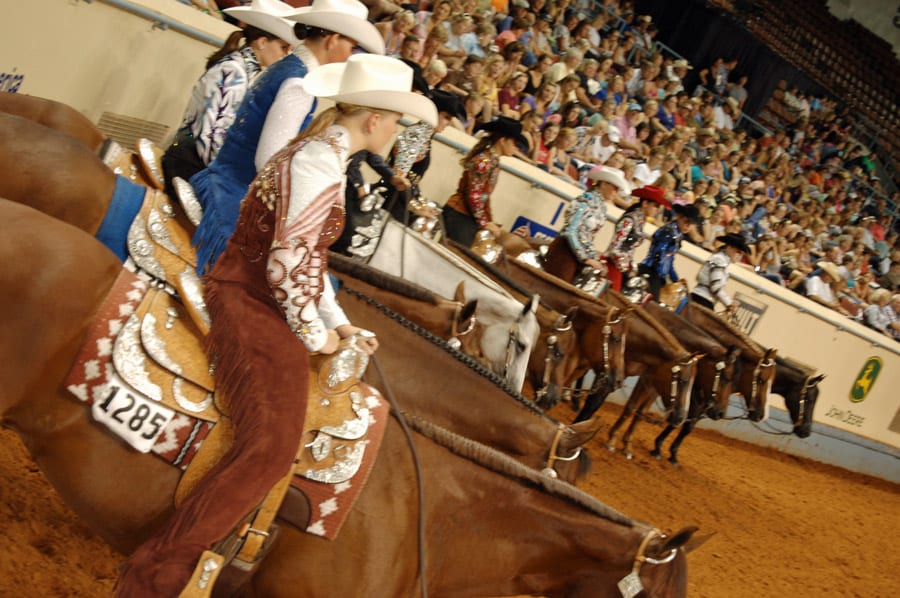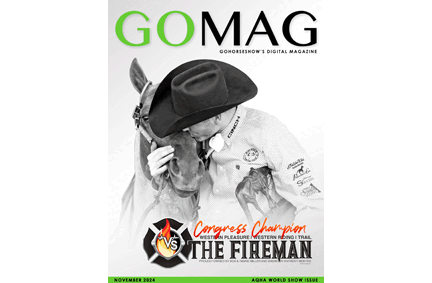At this year’s AQHA Youth World Show, there were 142 exhibitors who
qualified to compete in the Trail, but oddly, no one from the
first 81 horses made it back to the finals. However, seven of the last 16
horses returned to the finals. We started
to wonder how much your draw number really matters, and if it does, do they need to have cuts for these classes as well to even
the playing field?
We asked the experts in several different disciplines from the Hunter classes to the Trail whether it matters where you draw up in the working order at the major shows. How do you handle customers if they draw up early–whether they believe going later is an advantage or disadvantage. Does it make a difference in the finals? GoHorseShow.com also asked if they believe there should be cuts at the major shows like the World and Congress in the scored events like the Western Riding, Trail, and Hunter events.
Here is what the experts had to say. Please vote at the end of the article and let us know what you think!
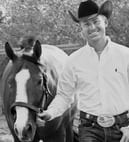 Reid Thomas–Multiple Congress and World Champion Trainer
Reid Thomas–Multiple Congress and World Champion Trainer
I think it is a major problem and disservice to the participants who have worked all year to prepare and be cut out of the equation. I think there should be cuts run in the large classes like trail and hunters. Human nature is to wait with anticipation and hopes of bigger and better! I place blame on the system, not the judges. For example, I honestly believe had there been 30 trail finalists (at the AQHYA World Show), the placing would have very different.
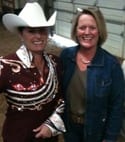 Holly Hover–AQHA judge and Top Clinician
Holly Hover–AQHA judge and Top Clinician
I think you know that this is a loaded question! It is just the nature of the system that at a world show level, many judges are going to be cautious or conservative at the start of the draw. I can tell you that in every experience I’ve had at such an event, I believe absolutely that all judges put their best effort into judging accurately and fairly. I think it takes a strong background of experience in any event to produce a judge with the confidence to score consistently from start to finish. Your suggestion of a semi finals or “cuts” in such an event would be very beneficial. I do know that it is a struggle to fit all of this into the time frame set aside for these events. It is a point that certainly needs more consideration!
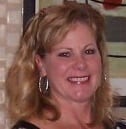 Karen Evans Mundy–Multiple World Champion rider and trainer
Karen Evans Mundy–Multiple World Champion rider and trainer
I think it would help to have cuts when the classes have 100 or more, as does the Youth World. I know in the Trail, Western Riding and the events that are scored, it shouldn’t matter, but as was seen in the Trail at the Youth World, it does. The judges were obviously more conservative in their scores in the first 80, and I am sure there had to be someone in there that should have been in the finals. When the classes are that big, it would definitely seem more fair to have cuts.
 Lainie DeBoer-World Champion Hunter Exhibitor and Trainer
Lainie DeBoer-World Champion Hunter Exhibitor and Trainer
Sometimes in a preliminary that has 90 or so it can be easy to be lost if you go early, that is why you need to be so spectacular and stand out, separate yourself from the rest and prove you should be in the final. I have had several students go first in the final, and I have always used the approach that it is the most powerful position. It proves to the judges you have a plan and you are sticking to it, but it puts pressure on the other riders to be better than you. We won three World Championships that way.
If they draw early, I just tell them they can’t dwell on it, and to just go out and be so good that there is no question at all that you deserve to be in the final. Don’t leave anything out there for discussion, get the job done. During the show season, if we are at a big show, and we can post ourselves, I make all my people go first a couple of times. They get experience going first and blazing the trail, especially in Equitation Over Fences.
It can be an advantage to draw late if the class has been rough. They are looking for a good round, or you can watch other exhibitors go and find out any trouble spots, but sometimes it is a disadvantage. I know that sounds crazy, but some people have a hard time psychologically going late. If you are warming up and you hear all the cheers or an exhibitor comes out of the ring smiling, hugging, and jumping up and down, sometimes that can put a lot of pressure on a rider to be perfect. As far as judging, I think the confident judges are going to judge the first horse, the last horse, and everyone in between the same.
 Michelle Tidwell-AQHA judge and assistant trainer to Nancy Cahill
Michelle Tidwell-AQHA judge and assistant trainer to Nancy Cahill
I would like to see the semi final or cuts used in the trail and maybe the western riding. There are so many talented youth horses and riders that it is tough to make the finals at the youth world. But I think it would be fair to all exhibitors for the trail to have cuts. Last year, the same thing happened at select world that only one horse made it back to the finals out of the first half of the class. While again, there are so many talented horses; it makes the general public or exhibitors to almost begin to determine their fate by their work order. I know that by adding the cuts in the horsemanship, showmanship, and equitation; it has seemed to make people happy and not worry about their draw.
I tell my customers to ride and give the judges something to judge. I always tell them to set the pace and give the other exhibitors something to ride at. I try not to say too much about the draw because they already know what it is, and there is nothing you can do to change it. We had one customer– her first time at the world show. She was only 11, and drew first in the horsemanship, but she handled it great and rode a really good pattern.
As far as the finals I think there is no bad draw. I have some that like to be first so they can set the pace and going later makes them nervous. And one the other hand some prefer to go later and know what they have to do to make a big score. So I guess sometimes the draw depends on the person to how they handle it.
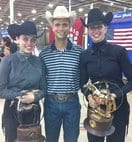 Brad Jewett– AQHA judge and Trainer of recent Youth World Champion Carey Nowacek
Brad Jewett– AQHA judge and Trainer of recent Youth World Champion Carey Nowacek
In a class of 15, no. Apparentely in a class of 160 yes. I think they have made it more fair with the other pattern classes taking 15 from 2 cuts and then narrowing to 15 after semifinals. I think the same is needed in the trail. I know that would require more time in the day to run 30 more goes, but I would rather have the right horses and riders in there, even if it took two more hours.
In my opinion, the draw never determines how well I prepare a rider. There are so many good riders out there, so, you have to be at minimum correct, early draw or not. I am a positive spin guy, so no matter what, there’s always a rosie side. To me, there is a pulse in a class. What I mean is–there is going to be a pack of good riders and a pack of subpar goes. So there is always a goal once you determined your draw. With a rider that is new and maybe doesnt have a “reputation”, and your in a pack of good, well known riders, I expect you to keep pace with them, and you should be right along side of them when they make the callbacks. If you are in a pack of subpar goes, then, I expect you to be better than them. If you have a reputation in a certain class, the draw becomes a little less of a topic of conversation. The bottom line is you have to go prepared and stay away from major faults, whether you go early or late. In the finals you can win from anywhere. That’s been proven.
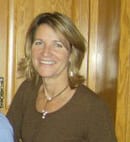 Stephanie Lynn–AQHA judge and World Champion trainer and rider
Stephanie Lynn–AQHA judge and World Champion trainer and rider
In general, the most difficult draw will be in the middle. We are schooled very hard to reward and recognize a good or great go early. For me, early is good, and I try to be very generous when I see that first good/great go. I know that the perception is that later is always better but often times, by the end of a really big go, you have seen so many similar goes that your eye becomes harder.
I tell them they have an opportunity to set the pace and be remembered. You have to be agressive and confident if you draw early in a large class. It can be an advantage to draw late but not always. As stated earlier, sometimes after watching 80 trips of similar kind, it is very difficult to stand out from the previous 80. As a judge, it does not matter for me. I cannot speak for others. In a finals of 15 your order is irrelevant. I think that wherever you draw, your draw is an opportunity to make an impression on the judges. Good or bad – this is your time to set yourself apart from the other riders. Use good sense, know your horse, your strengths and weeknesses and take advantage of your strengths – leave those weaknesses back at home and play on your strengths. I cannot stress that enough. It has less to do with your draw than with your confidence and ability to draw the judges attention in a positive view. I think that cuts could work in the hunter classes, however, you do not always end up with the true top of the class that way. You often get a nice cross section of the riders and horses, but, not necessarily the top horses. Cuts can have better groups and a set number does not always allow for the freedom to take as many good horses out of a particularily strong cut or fewer from a weak cut. So, it depends on the competitions goals for their finals.
 Kelley Rampey–AQHA World Champion Hunter trainer and exhibitor
Kelley Rampey–AQHA World Champion Hunter trainer and exhibitor
I agree that judges scoring is much more strict at the beginning of the runs and gets more relaxed throughout. Yes, they should divide into cuts as in equitation, etc. and bring back 30 to re-run their course for their top 15. I believe the same should be true in the fence classes as well, although there are only about 90 as compared to 150. Another thing, AQHA should really consider the age group category. I feel like we lose too many youth to APHA because they have the age divisions–giving younger ones a better chance at winning!
I tell them nothing different when they draw early. However, they must plan to make an entrance that counts. We want to get noticed right away, so, it is extremely important for the horse to be well groomed, plump, not sun bleached, and riders to step into the pen with a lot of confidence. Drawing late is an advantage–as the judges and riders have seen many riders make the same mistake at the same jump. So, when a later rider comes in, they know where the problem spot is! I can tell my riders who draw up later how to approach a fence a little differently if I see horses having difficulty approaching a certain jump, etc. We have had a lot of success drawing first in the finals. Definitely sets a pace for others to follow and sets a great impression to the judges to see a great run right off the bat–especially if everything that comes after is mediocre! The only benefit to being later in the draw is to watch mistakes being made, especially in Equitation over Fences where the lines have options. Although in the hunter pen, you pretty much already know how everything is going to ride. Still, I would like for them to consider doing cuts in any class that has over 60 competitors. Understanding that some cuts may be deeper, and they may have to take a few more back from a tougher cut!
 Gary Reynolds–AQHA judge and NCAA Equestrian Coach for TCU
Gary Reynolds–AQHA judge and NCAA Equestrian Coach for TCU
You asked a question that is very difficult to find a definitive answer to. When I worked at AQHA, I actually pulled three years of data from the classes with working orders. In that time frame, there was no significance of horses in the top or bottom of the draws making it to the finals. Which was different than we thought.
In the sport of Varsity Equestrian, we have two classes that are scored differently than judges are familiar with. We use the incremental judging system similar to the system for reining to judge the horsemanship. The equitation is judged using a 1-10 per maneuver system. In those two classes, we will have riders demo the pattern as many times as necessary until the judge is familiar with the course.
Here is what I believe. Most of the judges we have that are doing the major events are extremely competent at recognizing and rewarding great runs when they see them. What I believe happens is this often times the level of competition will struggle until somebody comes through and has a great run. It can happen at the first of a class, or halfway through a class but as soon as it happens then everybody behind them has to rise to the occasion. It is difficult for an exhibitor psychologically to go out and try to be a 75 or a 76 if all they have to beat is a 71-72.
 Bonnie Miller-Multiple Carded Judge
Bonnie Miller-Multiple Carded Judge
I
think that in a scored class like Trail, this effect is minimal
because, as a judge, I have a standard in my head for scoring each
obstacle. I pretty much go with how I score the first horse to make
myself stay consistent. I did a small NRCHA show two weeks ago. The
very first horse in the arena for the two days had a great run – a 73 in
the reined work and a 73 down the fence. That 146 was the highest score
by 4 points over the entire two days. If I was not as experienced and
did not have the great training that NRHA has given me, I might have
underscored that run. But, since I have judged many many runs, I have
pre-established criteria for what constitutes a zero, plus one half or a plus one.


